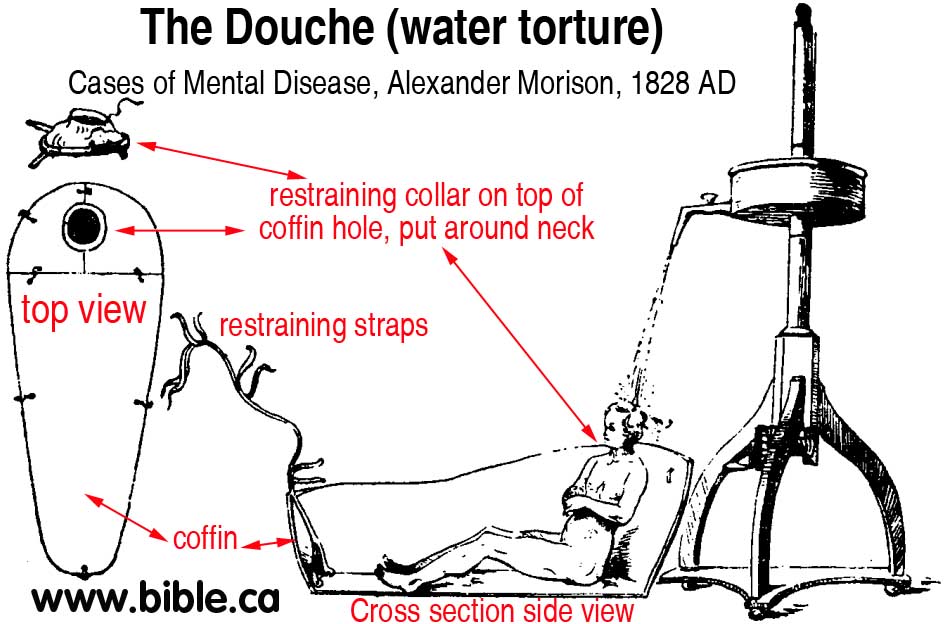
Cases of Mental Disease, with Practical Observations
|
|
Introduction:
Cases of Mental Disease, with Practical Observations, Sir Alexander Morison, 1828 AD
THE DOUCHE AND THE ROTATORY MACHINE, 1828
In visiting private asylums for the insane, I have had frequent occasion to observe, that the difficulty of procuring proper machines for administering the Douche and Rotatory Motion, has prevented medical men, having patients under their care, to whom these remedies might have been beneficial, from making a trial of them. I have therefore thought it may be useful to give drawings of Machines for each of the above purposes, which t may be erected at little expense, and by any intelligent carpenter.
F I G S. 117 & I 18 Drawings of contraptions for administering two favourite physical treatments 'the Douche' and 'Rotatory Machine . . . which may be erected at little expence, and by any intelligent carpenter', from Sir Alexander Morison's Cases of mental disease, with practical observations . . . For the use of students, 1828 (London, Longman & Highley), with 'Explanation of the Plates'.
|
The first Plate gives a view of the different parts of an apparatus for giving the Douche, consisting of a bucket, from which a stream of water is made to fall on the head of the patient from different heights, regulated by a rope and pully, — by the cock inserted into the lower part of the bucket, the size of the stream is regulated; in this Plate is likewise exhibited a perpendicular section of a warm bath, with the position of the patient in it, form of spring-straps to fasten him, if necessary, — the cover of the bath, with space for the patient's neck, and a wax-cloth tippet to carry off the cold water. |
|
|
In the second Plate, the form of a Rotatory Machine is given, consisting of two perpendicular posts, connected by two transverse beams, — a strong armchair, with straps to secure the patient, and four ropes attached to it, and kept apart above by a perforated piece of wood, to prevent their being entangled; the chair is made to turn by ropes and pulleys, moved by a small wheel; the position of the patient may be rendered more or less upright, by adjusting the length of the ropes by which the chair is suspended, or by cushions fixed in it. |
By Steve Rudd:
Contact the author for comments, input or corrections.Send us your story about your experience with modern Psychiatry